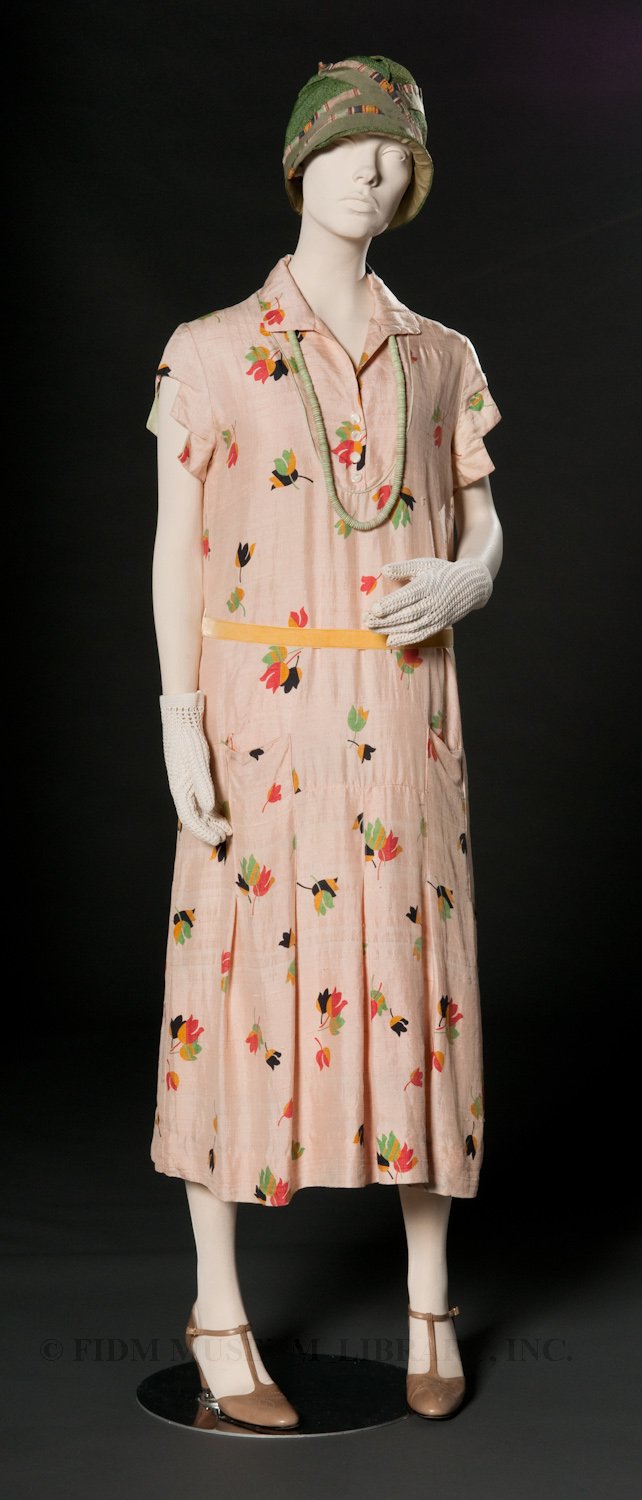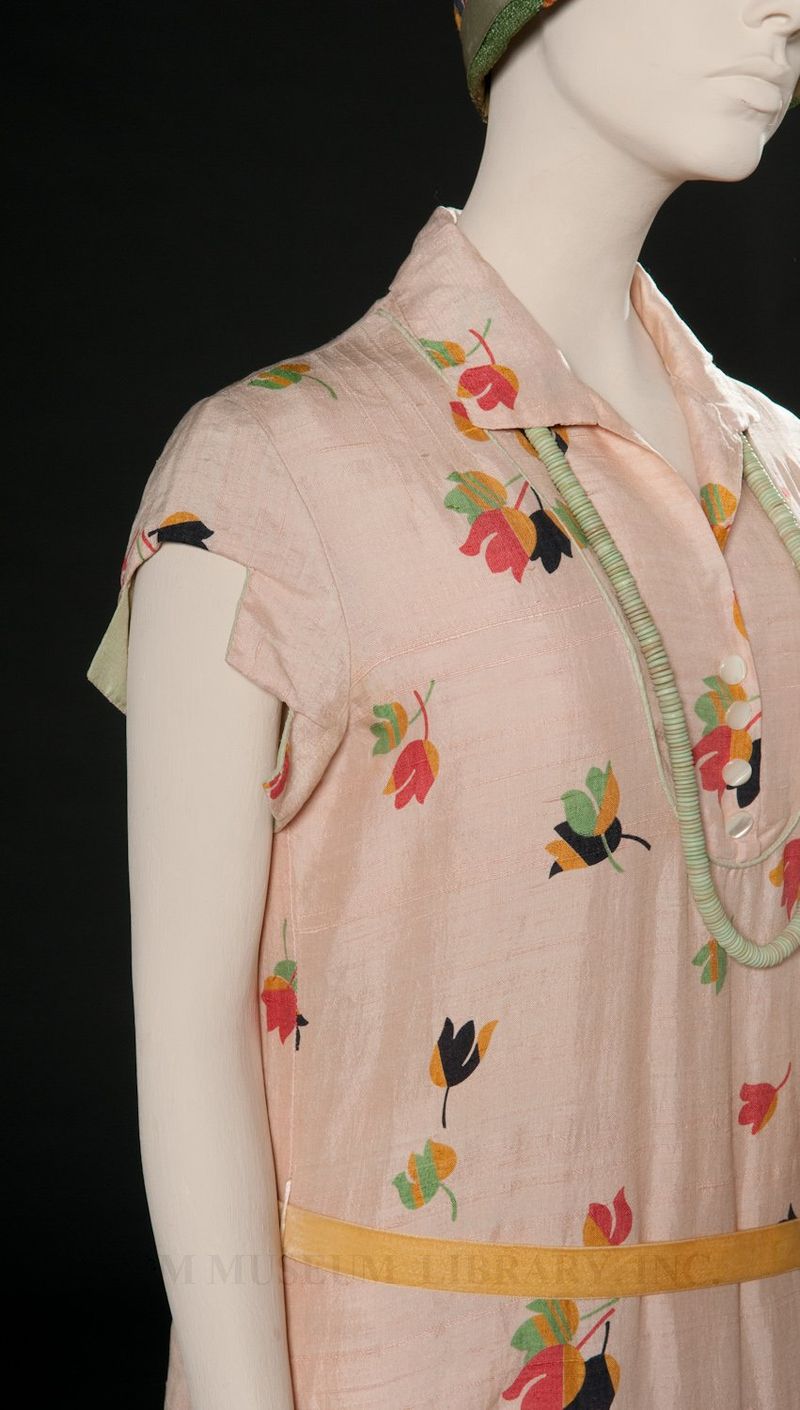1920s silhouette
The slim, youthful silhouette of 1920s fashion signaled the emergence of a new ideal of feminine beauty. Unlike her predecessors of the late 19th century, who favored the silhouette of a mature, well-endowed woman swathed in layers of fabric, the 1920s woman dressed in a style that emphasized youth. Lightweight daydresses for adult women were designed to expose bare arms and lower legs, parts of the body typically covered by all except young girls. Elasticized undergarments de-emphasized the breasts and hips, creating what is often described as a "boyish" silhouette. The appearance of masculinity was reinforced when women bobbed or cropped their hair.
 Daydress c. 1926 Gift of Santa Monica City College 95.622.1
Daydress c. 1926 Gift of Santa Monica City College 95.622.1
This shift to a new physical ideal was a move away from the late 19th century idea of the body as a canvas meant to be enhanced by shaping undergarments. Instead, women were expected to reduce their multiple layers of undergarments and possibly even their body mass. Because the physical ideal was slim and slender, "clothing only succeeded in its object of enhancing feminine beauty when worn on a nearly ideally suitable body."1 For women with a less-than-ideal body, diet and exercise were recommended. Some lamented this overall shift, feeling that it might result in a tyranny of youth and slenderness.
The pale color and delicate floral pattern of this dress convey a youthful feeling, as do the revealing cap sleeves. The elimination of bust dart reveals the intent of the maker, who clearly intended this dress to be worn by a woman with a youthful body type. Though the 1920s silhouette was soon eclipsed by a series of alternate silhouettes, it's fascinating to think that some of the issues raised by its emergence are still a part of fashion discourse. "Ideal" body types still tyrannize women, causing some to turn away from the pleasures of fashion and style entirely. Many runway and print models are slender teenagers, a body type idealized by designers when creating garments. This may be shifting, however, as a recent movement to include more voluptuous models on the runway has emerged. Take a look at the Prada 2010 Ready-to-Wear runway images for garments clearly designed for more mature women. Readers, what do you think? Does the suggestion of a specific, idealized body type cause you to reject (or accept) particular styles? Or the work of particular designers?
1 Steele, Valerie. Fashion and Eroticism: Ideals of Feminine Beauty from the Victorian Era to the Jazz Age. New York: Oxford University Press. 239.
